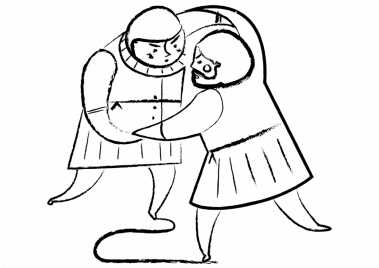Sheet #1: Marshland
By Tudor times the marshland was used for pasturing cattle and for public events such as wrestling matches and bear-baiting. There were also targets for arrows, as the law at the time required all able-bodied men to practice their archery. In the early 1600s, the marsh was tidied up and tree-lined walks were planted for people to enjoy walking along. The local militia’s ‘trained bands’ also used the Marsh to parade on and practice musket firing.

© Bex Glover, 2018
Sheet #2: Literary Haven
King Street was home to one of the first public libraries in the country. It was housed in a building donated in 1613 “for the free use of the merchants and the shopkeepers of the city.” This library was used by almost every significant figure in the city’s history, including Romantic poets Robert Southey, Samuel Coleridge and William Wordsworth. It played a vital role in Bristol as a source of information about history, science and the wider world. Abolitionists used the library for research when gathering evidence against the Transatlantic Slave Trade. The building is now the Cathay Rendezvous restaurant.

© Bex Glover, 2018
Sheet #3: Treasure Island
The Llandoger Trow is steeped in legend. It is the site of many ghost stories and it is rumoured that Daniel Defoe meet with Alexander Selkirk there, which led to him writing ‘Robinson Crusoe’. Selkirk was a sailor who was left marooned on a Pacific Island. Bristol sea captain Woodes Rogers rescued Selkirk, who lived at Rogers’ house on Queen Square for a while on his return. Selkirk would parade around the area in the goatskins he had worn on the island in the hope of getting people to give him money to fund his drinking habit.

© Bex Glover, 2018
Sheet #4: Bristol Riots
In 1831 local grievances against the rich residents of Bristol who ran the city exploded into riots. Much of this unrest centred on Queen Square. Several buildings were broken into and looted, including the Mansion House, which was the Mayor’s residence at the time.

© Bex Glover, 2018
Sheet #5: Bristol Blitz
Between the winter of 1940 and early 1941 many buildings on King Street were damaged or destroyed in the bombing of the city during the Blitz. Merchants’ Hall, a section of the Merchants’ Almshouses, and part of the row of buildings that are now called the Llandoger Trow were all hit. Miraculously, the theatre survived untouched by the violence.

© Bex Glover, 2018
Sheet #6: Eleanor Rigby
The Beatles’ song ‘Eleanor Rigby’ was a big hit in 1966. It is claimed that Paul McCartney saw the sign for Rigby & Evens wine merchants on their warehouse at 22 King Street and that this inspired to pick the surname ‘Rigby’. McCartney, wrapped in a large scarf so that fans would not recognise him, was waiting to meet his girlfriend Jane Asher when he spotted it. She was appearing in ‘The Happiest Days of Your Life’ at the Theatre Royal at the time.

© Bex Glover, 2018
